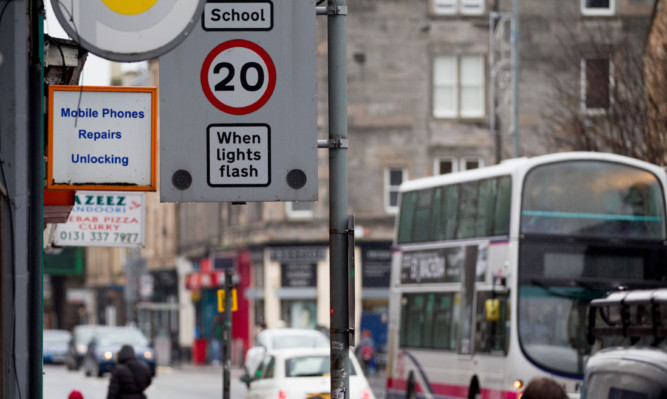
Are 20mph zones doing more harm than good?
Fears have been raised 20mph zones may be making the roads more dangerous.
Campaigners, politicians and health experts insist reducing the speed limit in built-up areas has considerable safety benefits.
There are growing calls for the zones to be enforced in more villages, towns and cities.
But we can reveal there’s been a huge increase in people injured in collisions on roads with 20mph limits, while the accident rate on other streets has plummeted.
Critics seized on the figures as evidence the lower limit is luring pedestrians into a false sense of security.
The warning comes only days after council chiefs in Edinburgh announced plans to cut the speed limit on the majority of its roads.
Hugh Bladon, of the Alliance of British Drivers, said: “This is the wrong way to go. Pedestrians and cyclists are lured into thinking things are moving a lot more slowly and are therefore safer.”
Official stats show between 2009 and 2013 there was a 76% rise in the number injury-related road accidents in 20mph zones.
There were 3,164 people killed, seriously or slightly injured compared to 1,795 four years earlier.
In comparison, accidents on all other roads in built-up areas fell by 17%, from 153,965 to 127,438.
Mr Bladon added: “I have no problem with people driving at 20mph or indeed slower when kids are coming out of school and so on.
“But to enforce this 20mph limit across the board is pandering to a few people who seem to think it will make the road safer. The fact more people are being injured is proof they do not work.”
There are 20mph zones across the majority of built-up areas in cities including Newcastle, Manchester, York, Liverpool and Middlesbrough. But Edinburgh is expected to introduce the limit across most of its streets.
If the move is approved later this month other councils may follow.
Glasgow has 54 zones where the speed limit is lower than the normal 30mph and it is planning to introduce another 11. Across the UK, 46 councils have 20mph zones.
Campaigners insist the zones are safer, pointing to research which shows people being knocked over by cars doing 20mph have an 87% chance of survival while the majority of those hit at 30mph are seriously injured or killed.
Rod King, of the 20s Plenty, pressure group put the rise in injury figures “down to an increase in the number of 20mph zones”.
And he believes motorists will embrace the zones as they become more common.
He said: “Noise, pollution, travel, and transport efficiency, are all affected by the reduction of speed limits. Everybody wins if we reduce our speed.”
Motoring groups claim the lower speeds hike pollution levels as vehicles stay in less efficient lower gears to avoid breaking the law.
However recent research has challenged this view.
A Friends of the Earth Scotland spokesman said: “Slower cars will make roads safer which will, in turn, increase walking and cycling rates.
“More people walking and cycling will improve health and reduce air pollution.”
In November the Royal College of Paediatrics and Child Health said the speed limit in all built-up areas should be cut to 20mph to reduce the death toll of children on the roads.
It came in the wake of a survey of school children which found two in five had been hit or nearly hit by a vehicle while on foot or bike.
However a poll of drivers by the AA revealed two thirds believe that people should be consulted on a local level before each 20mph zone is rolled out.

Enjoy the convenience of having The Sunday Post delivered as a digital ePaper straight to your smartphone, tablet or computer.
Subscribe for only £5.49 a month and enjoy all the benefits of the printed paper as a digital replica.
Subscribe